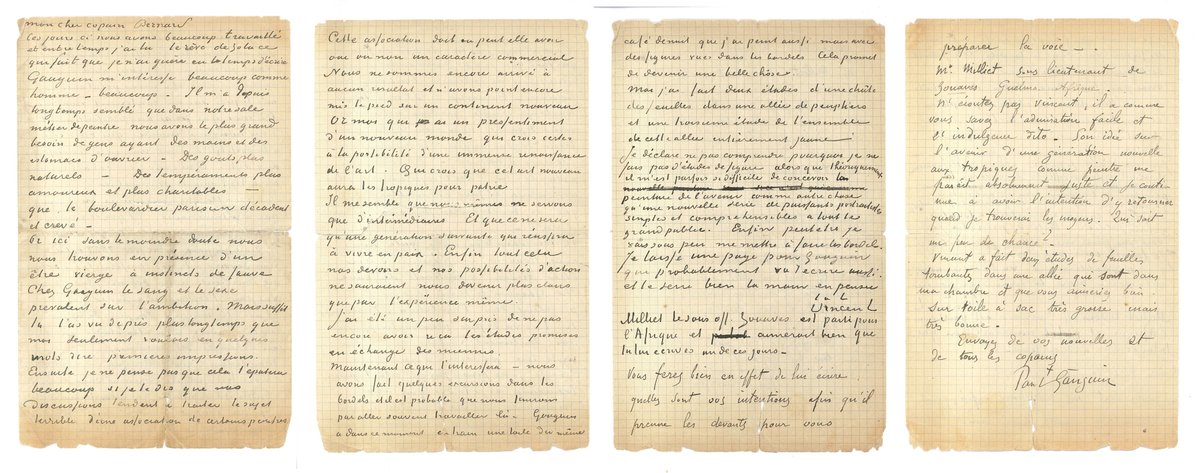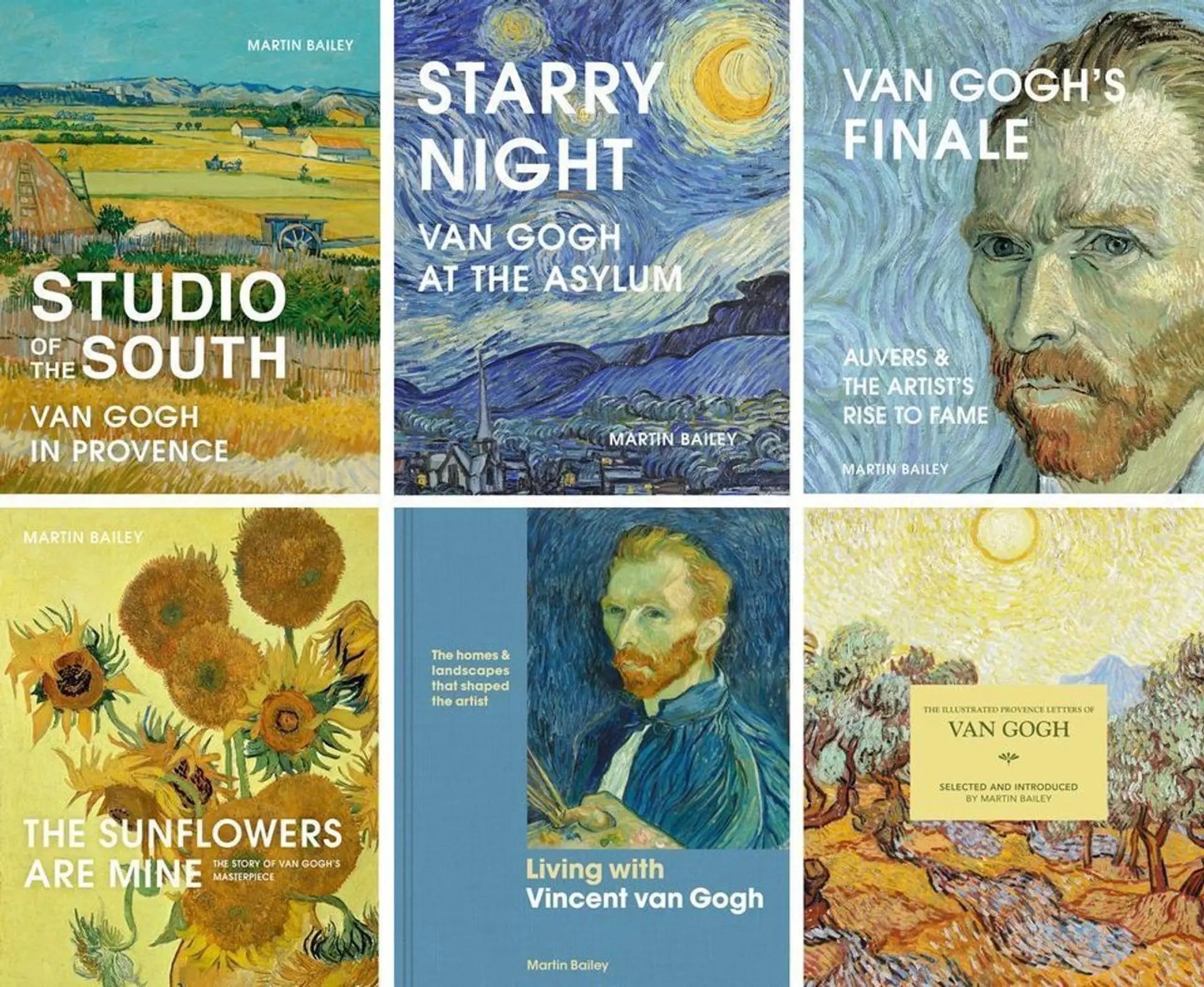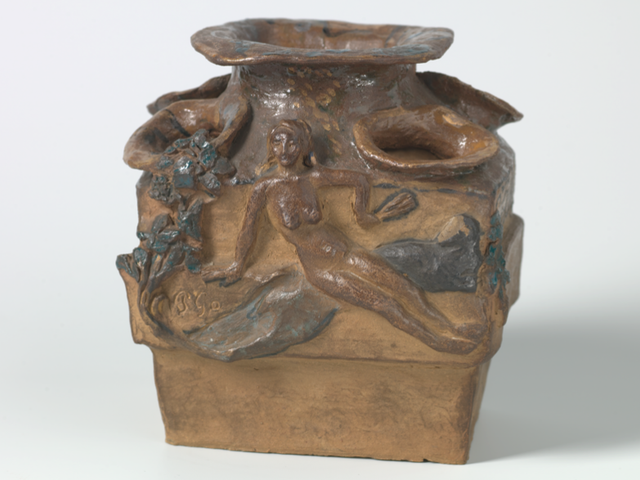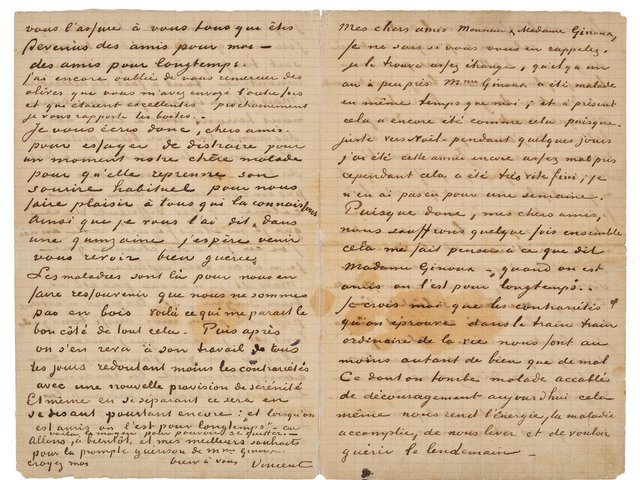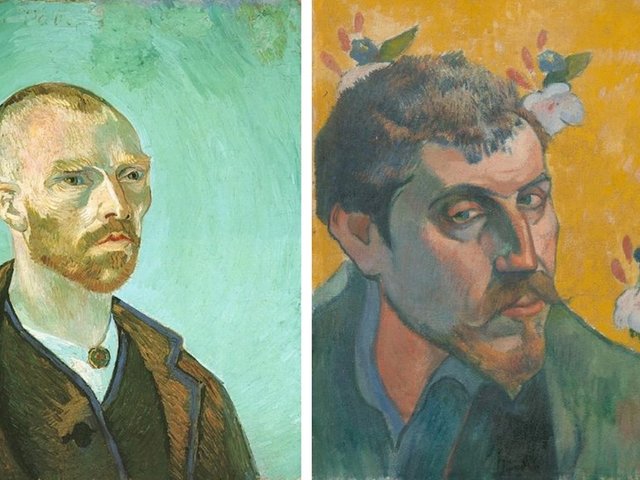A Paris auctioneer is selling a letter with nearly three pages written by Vincent van Gogh and a page or so added by Paul Gauguin. Estimated at €180,000-€250,000, this unusual document comes up for sale at Drouot Estimations on 16 June. It was originally sent on 1 or 2 November 1888—just a week after Gauguin had joined Van Gogh in the Yellow House in Arles.
The recipient of the joint letter was their friend Emile Bernard, a 20-year-old avant-garde artist. He was then working in the artists’ colony of Pont-Aven, in Brittany.
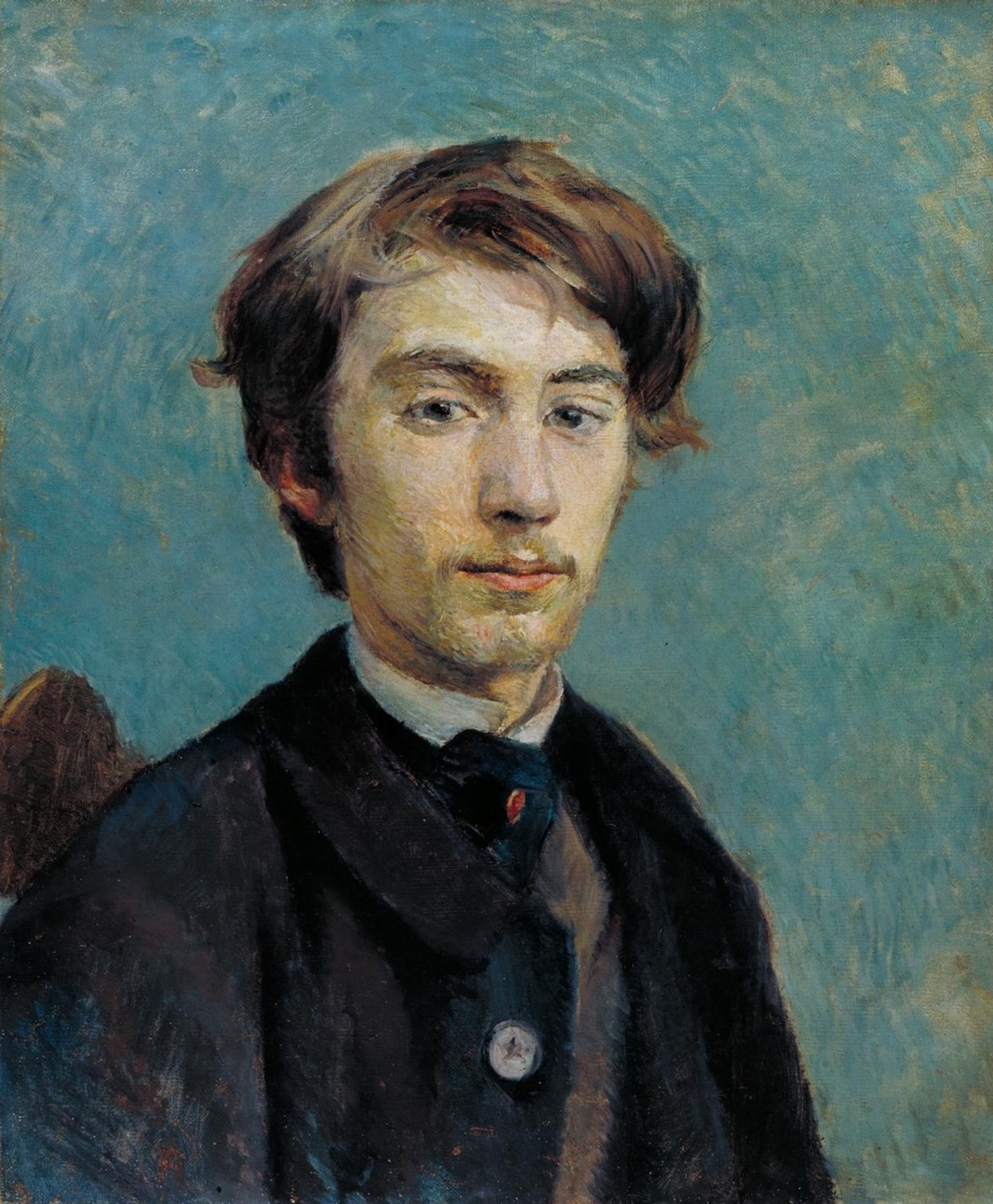
Henri de Toulouse-Lautrec’s Portrait of Emile Bernard (1885) Courtesy of the Tate, London
The November 1888 letter is particularly important because of Van Gogh’s vivid description of his housemate Gauguin: “We’re in the presence of an unspoiled creature with the instincts of a wild beast. With Gauguin, blood and sex have the edge over ambition.” He was "more amorous and benevolent” than “the decadent and exhausted Parisian man-about-town”.
Van Gogh also reported that already “we’ve made some excursions in the brothels, and it’s likely that we’ll eventually go there often to work”. He meant, of course, to paint.
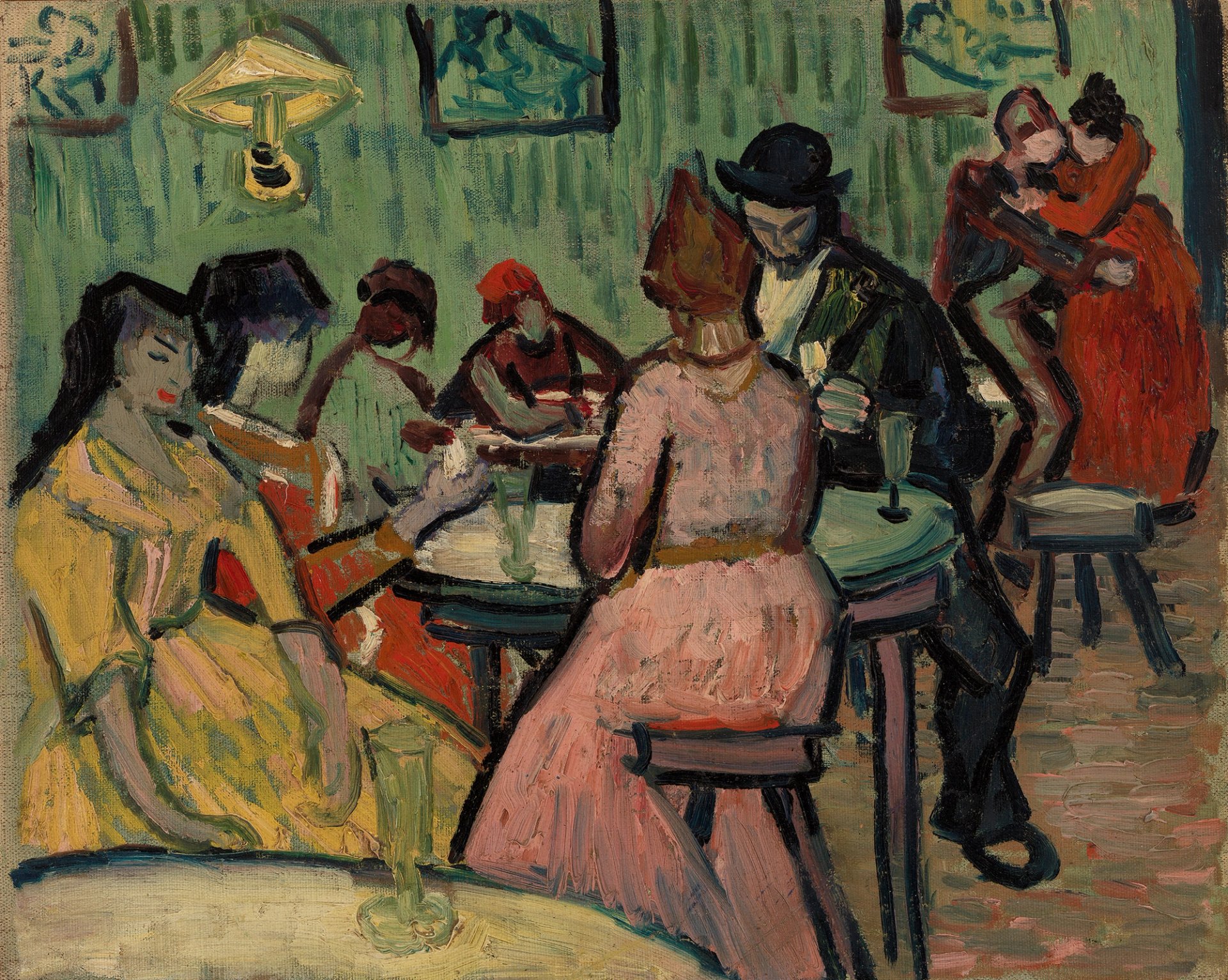
Vincent van Gogh’s Brothel (November 1888) Courtesy of the Barnes Foundation, Philadelphia (BF104)
A week later Van Gogh made what he described as “a rough sketch of a brothel”—a small, quickly-painted oil picture. The two men at the back with their partners are Zouave soldiers, with their uniform caps. The tall glasses on the tables suggest that absinthe is being drunk. And with a touch of artistic licence, Van Gogh has hung three paintings on the wall: the one on the right is suggestive of Titian’s Venus of Urbino (1534).
Although Van Gogh described the scene as a brothel, there is an air of relative propriety, other than possibly the couple at the back. What interested Van Gogh was exploring the social interaction of prostitutes, pimps and punters—not voyeuristic images.
Van Gogh’s setting was probably one of the establishments in Rue du Bout d’Arles, just five minutes’ walk from the Yellow House. It was most likely number 1, where he went on that fateful night two months later after he mutilated his ear. That brothel employed seven women and five appear in his painting.
Although Van Gogh observed such scenes, he could hardly have painted there, so he had to work from memory, resulting in a rather crude and expressionist work. He hoped to develop this into a larger and more finished picture, but never did so.
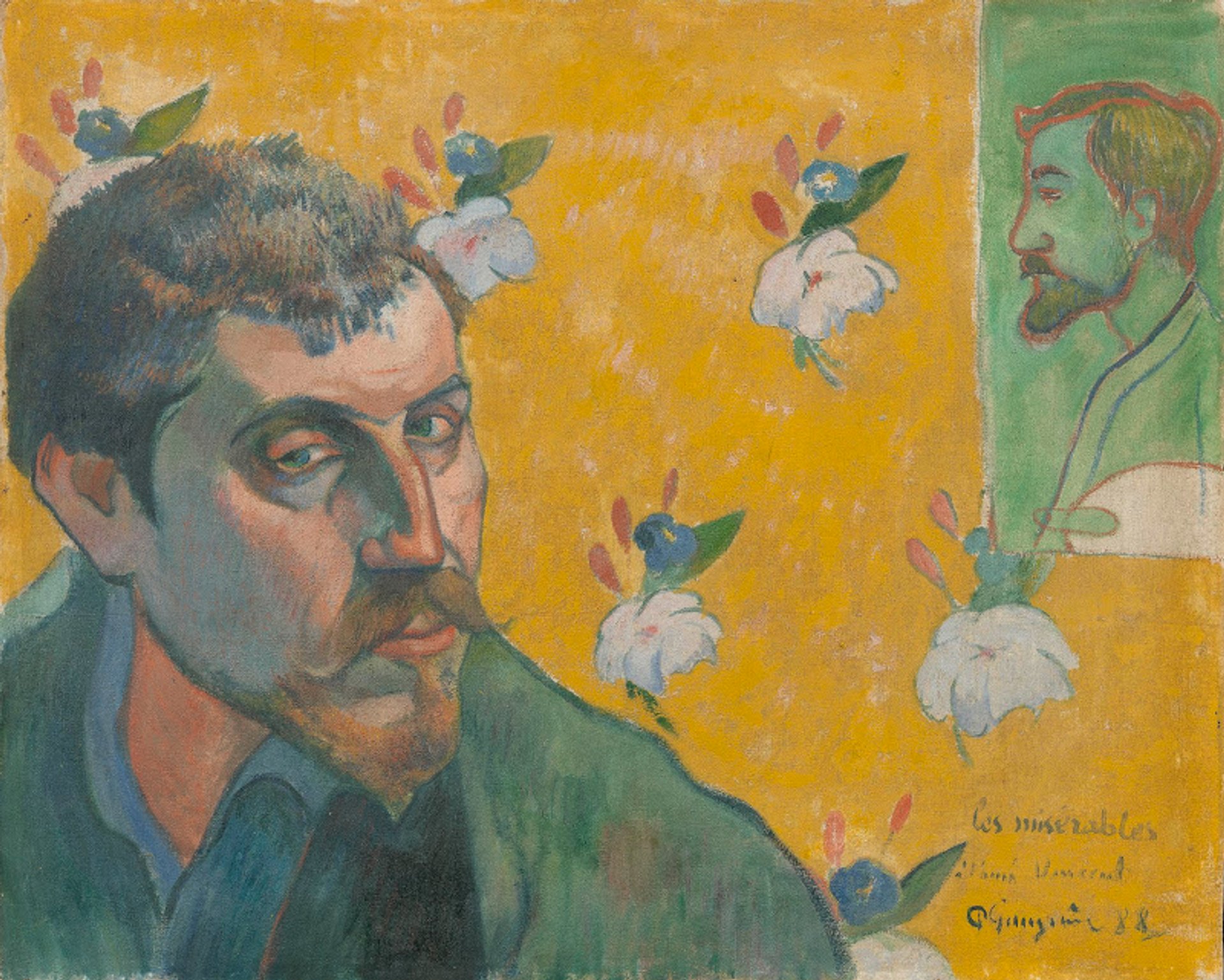
Paul Gauguin’s Self-portrait with portrait of Emile Bernard (September 1888) Courtesy of Van Gogh Museum, Amsterdam (Vincent van Gogh Foundation)
At the end of Van Gogh’s letter, Gauguin added a shorter one. A few days earlier he had revealed to Van Gogh his latest plan: to travel to the Indian Ocean island of Madagascar (now Malagasy), to establish his “studio in the Tropics”. In his letter, he advised Bernard that the “the future of a new generation [of artists] in the tropics seems absolutely right”. Van Gogh agreed, writing that “new art will have the tropics for its homeland”.
Gauguin’s Madagascar plan never came off, because he could not raise the necessary funds. But three years later he would leave for Tahiti—a journey to an exotic world which would transform his art.
And what was the fate of the joint letter which is coming up for sale? Bernard kept it and a year later, in Paris, he gave it to the critic Albert Aurier, who was writing what would be the only detailed article on Van Gogh published during the Dutchman’s lifetime.
On Aurier’s death in 1892 the letter passed to his cousin Elaine Williame-Mahé and then to her descendants. It was later bought by the Parisian antiquarian bookseller and collector Pierre Berès, who died in 2008.
The Van Gogh-Gauguin letter was sold at Christie’s in 2012, when it was bought for Aristophil, a manuscript company run by Gérard Lhéritier. Aristophil was declared bankrupt three years later, and its huge collection is now being auctioned off—and hence the coming Paris sale.
In 2012 the letter had fetched €445,000 at Christie’s. This was at a time when manuscript sales were booming and the current Drouot estimate (€180,000-€250,000) is around half that figure. Since 2012 the market has fallen, but nevertheless the unique Van Gogh-Gauguin letter is likely to go for a very considerable sum when it comes up on 16 June.


